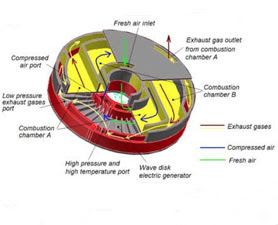t's common to see houses with solar panels on the roof harvesting energy to power household electricity, and if lucky the electrical grid. Now, a team from the University of Notre Dame is swinging back around on the idea of solar paint, and using semi-conducting particles to produce energy. This paint would be cheap enough to cover your entire house and turn it into a massive solar powered generator.
The goal was to find a way to move beyond silicon based solar technology. The team centered in on nano-sized particles of titanium dioxide, coated with either cadmium sulfide or cadmium selenide. The particles were mixed with a water-alcohol base to create a paste.
When the paste was brushed onto a transparent conducting material and exposed to light it created electricity.
While this is a huge stride in re-envisioning solar power there are still some hurdles. According to Prashant Kamat, John A. Zahm Professor of Science in Chemistry and Biochemistry and an investigator in Notre Dame's Center for Nano Science and Technology (NDnano), which is leading the research, "The best light-to-energy conversion efficiency we've reached so far is 1 percent, which is well behind the usual 10 to 15 percent efficiency of commercial silicon solar cells."
"But this paint can be made cheaply and in large quantities. If we can improve the efficiency somewhat, we may be able to make a real difference in meeting energy needs in the future," he added.
The team has christened the new paint "Sun-Believable and in addition to looking at increasing the efficiency of the product they will also measure stability. Their work on the solar paint has been published in the research journal ACS Nano.
While it is still early days, it does sound like the paint has a bright future.
Thursday, December 29, 2011
New Car Engine Sends Shock Waves Through Auto Industry

Despite shifting into higher gear within the consumer's green conscience, hybrid vehicles are still tethered to the gas pump via a fuel-thirsty 100-year-old invention: the internal combustion engine.
However, researchers at Michigan State University have built a prototype gasoline engine that requires no transmission, crankshaft, pistons, valves, fuel compression, cooling systems or fluids. Their so-called Wave Disk Generator could greatly improve the efficiency of gas-electric hybrid automobiles and potentially decrease auto emissions up to 90 percent when compared with conventional combustion engines.
The engine has a rotor that's equipped with wave-like channels that trap and mix oxygen and fuel as the rotor spins. These central inlets are blocked off, building pressure within the chamber, causing a shock wave that ignites the compressed air and fuel to transmit energy.
The Wave Disk Generator uses 60 percent of its fuel for propulsion; standard car engines use just 15 percent. As a result, the generator is 3.5 times more fuel efficient than typical combustion engines.
Researchers estimate the new model could shave almost 1,000 pounds off a car's weight currently taken up by conventional engine systems.
Last week, the prototype was presented to the energy division of the Advanced Research Projects Agency, which is backing the Michigan State University Engine Research Laboratory with $2.5 million in funding.
Michigan State's team of engineers hope to have a car-sized 25-kilowatt version of the prototype ready by the end of the year.
Subscribe to:
Posts (Atom)